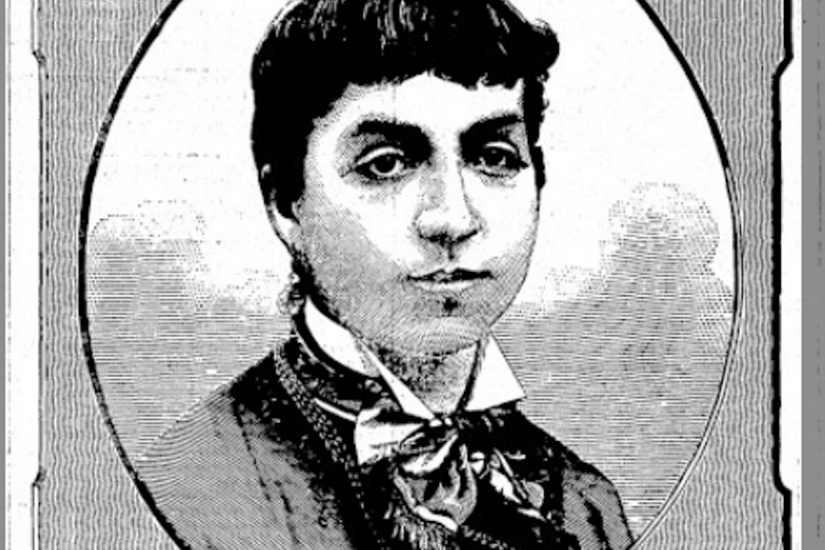Variety was a perpetual motion machine; it recruited the catchiest local acts into a loosely-affiliated circuit of venues. And Western debuted into its centripetal force, playing venues from Milwaukee to Liverpool at breakneck speed alongside comedians, trained animals, and trapeze artists. In the 1887–1888 season, she played ninety-five cities in multiple countries and was a soon a regular in the vaudeville monopolies that dominated live entertainment.
Her success was predicated on a flexible solo act that could play in a range of venues, from a dime museum in Pittsburgh to B.F. Keith’s Union Square Theater. “My turn is neat and strictly first class,” she explained to a prospective employer. “It consists of difficult and catchy solos on nine distinct instruments including playing upon two banjos at one and the same time. Juggling banjos in all manners of positions while playing.”
Western was being modest. She played over twenty instruments on stage, from wind instruments (trombone, flute, mellophone) to percussion (drum, hand-bells, xylophone) to the accordion family (Milanese pipes, concertina, harmonium, and organ) to plucked, struck, and bowed string instruments (guitar, harp, violin, dulcimer, piano, and three different banjos). We can only guess how she played two banjos at once, based on the account that “she caused [them] to oscillate like pendulums.”
In designing her act, Western was also shaping how she would be received. Her act called forth terms usually reserved for men: she was celebrated as a “musical expert,” a “finished artist,” and “more than a phenomenon […] a genius” of “great versatility and talent.” On a tour supporting star banjo player Sam Devere, it was Western whom reporters singled out as “the principal hit of the evening,” and other viewers noted her capacity to hold an audience’s attention for a full thirty-two minute set.
Shredding Verdi on swinging banjos, Western straddled the eclectic spectacularism of variety and the cultural authority of European tradition. This combination was well-suited to a major transition in mass cultural entertainment in the 1880s when managers seeking national monopolies pursued acts that could appeal to the widest possible demographic. Western could play any bill with a low risk of duplication, but she did not engage in raunchy humor or perform in blackface, and she convincingly pitched herself as art music. When a St. Paul manager wanted to promote his theater as “clean, high-class vaudeville entertainment,” he hired Western, a “master of twelve different musical instruments” with “a splendid European reputation.”
